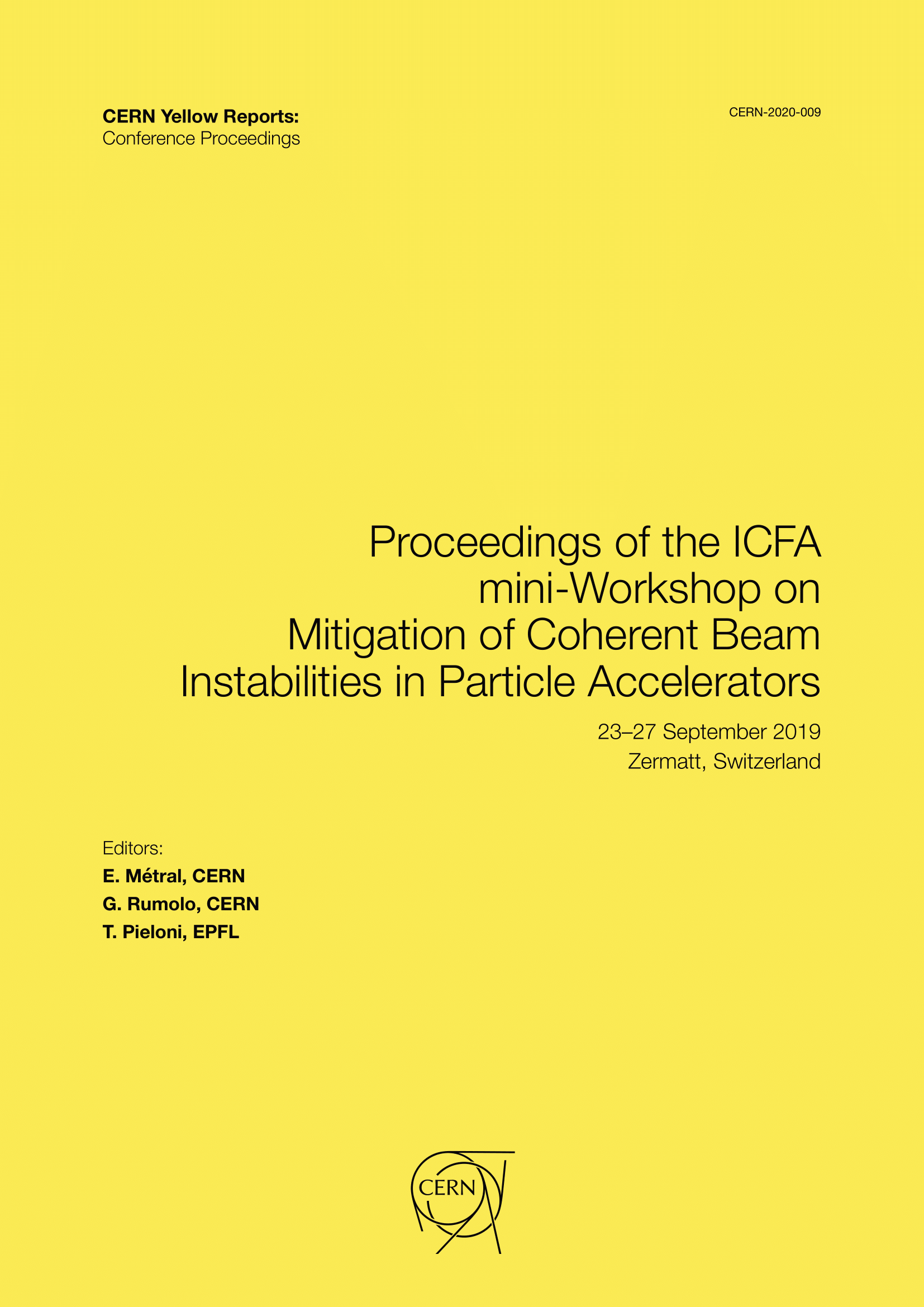Consequences of longitudinal coupled-bunch instability mitigation on power requirements during the HL-LHC filling
DOI:
https://doi.org/10.23732/CYRCP-2020-009.312Abstract
During the filling of the Large Hadron Collider (LHC), it is desirable to keep the RF cavity voltage constant both in amplitude and phase to minimize the emittance blow-up and injection losses. To have a constant voltage and to minimize power consumption, a special beam-loading compensation scheme called half-detuning is used in the LHC, for which the cavity fundamental resonant frequency needs to be de-tuned from the RF frequency by an appropriate value. This, however, can result in fast coupled-bunch instabilities caused by the asymmetry of the fundamental cavity impedance. To mitigate them, a fast direct RF feedback and a one-turn delay feedback are presently used in the LHC. The semi-analytical model that describes the dynamics of the Low-Level RF system in the LHC shows that, depending on the mitigation scenario, the required transient RF power during injection could significantly exceed the steady-state value. This means that for High-Luminosity LHC (HL-LHC) beam intensities, one can potentially reach the limit of available RF power. In this paper, the model is described, and benchmarks with LHC measurements are presented. We also shortly revisit the damping requirements for the longitudinal coupled-bunch instability at injection energy, to find a compromise between longitudinal stability and RF power requirements for the HL-LHC beam.
Downloads
Published
Issue
Section
License
Copyright (c) 2021 CERN

This work is licensed under a Creative Commons Attribution 4.0 International License.
Authors who publish with this publication agree to the following terms:
- CERN retains copyright and publishes the work licensed under the Creative Commons Attribution License 4.0 that allows others to share the work with an acknowledgement of the work's authorship and initial publication in this series.
- Authors are able to enter into separate, additional contractual arrangements for distribution of the published version of the work (e.g., post it to an institutional repository or publish it in a book), with an acknowledgement of its initial publication in this series.
- Authors are permitted and encouraged to post their work online (e.g., in institutional repositories or on their website) prior to and during the submission process, as it can lead to productive exchanges, as well as earlier and greater citation of published work (See The Effect of Open Access).

